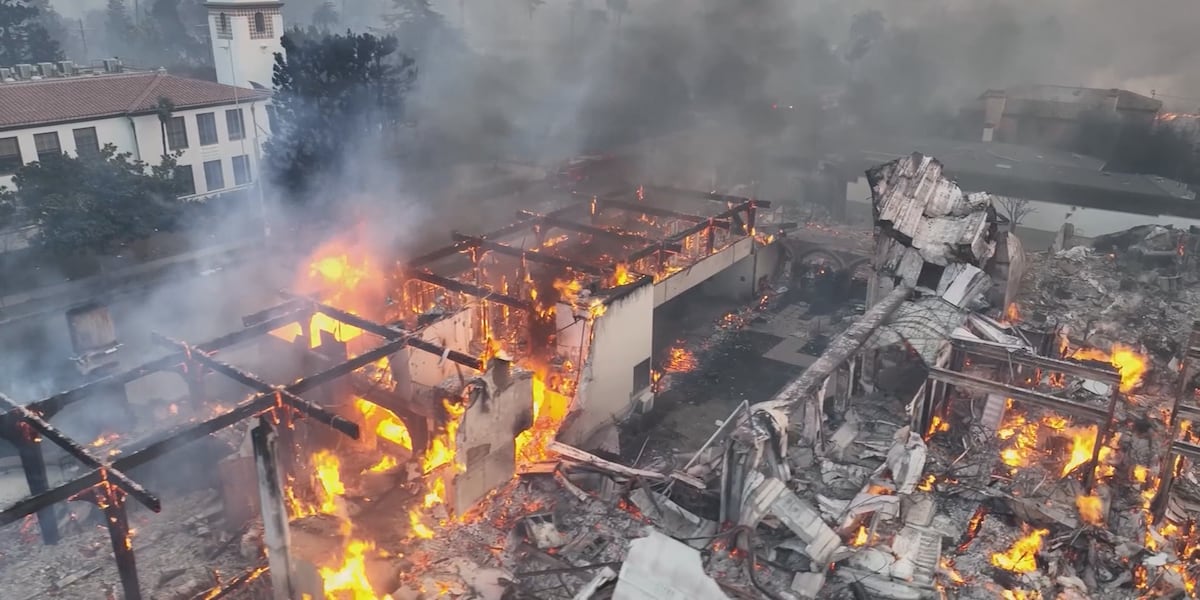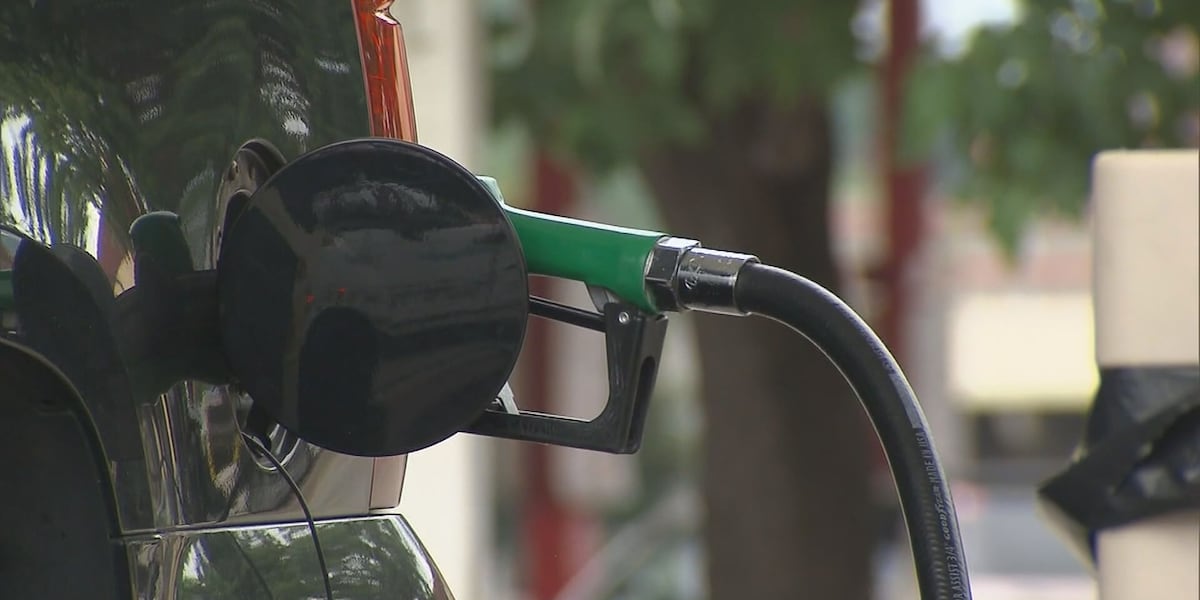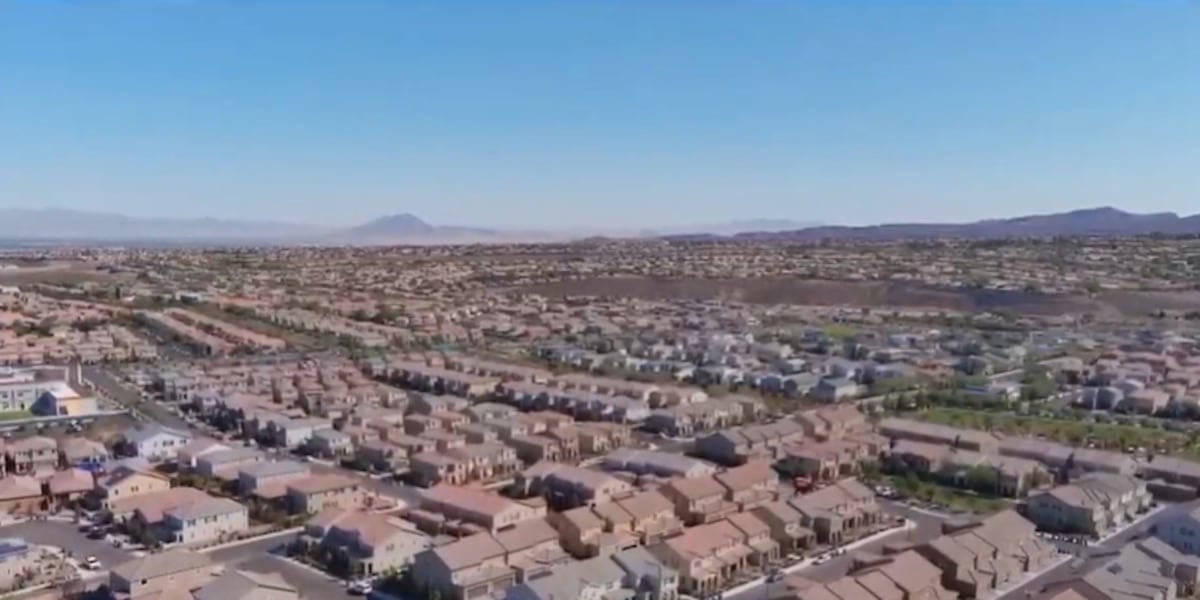For some who live in Claiborne County, Tennessee, talking about coal is like talking about politics or religion. You just don’t do it. Generations made a decent living from it. America was built using it. But whether it’s coming back — and most of all, whether it should — is a matter of opinion.
There’s a belief that’s less controversial around here, though: If you make a mess, clean it up.
That was taught to 70-year-old Claiborne County resident Sharon Petro as a young girl who trudged through the streams and climbed the ridges here. Petro says coal companies could use the lesson.
“Coal was a good resource,” she said. “But don’t come and get the coal, leave, and leave a mess — clean it up, because there’s still people who live here that have to live with that mess.”
Coal companies cleaning up behind themselves is also required by federal law.
But the country’s shift to cleaner energy may be making it harder to do just that. A Scripps News investigation has found as many as 1,300 coal mining facilities across Appalachia that have been sitting for more than a decade without being productive and still may not be fully cleaned up.
We found many companies no longer exist — leaving a bureaucratic entanglement that could make the wait many years longer.
These vacant mines threaten the environment, pose a danger to communities nearby and further suppress local economies by keeping the land from more productive uses.
The phenomenon is known by environmentalists as “zombie mines.”
Scripps News
Not Just Eyesores
“We use the term ‘zombie mine’ because the mine is caught somewhere between the living and the dead,” said Peter Morgan, a senior attorney at the national environmental nonprofit the Sierra Club.
Life in coal country looks a lot different now, but the struggles compounded by these stagnated mines are reaching a “crisis” in the communities forced to live near them, he said.
Coal companies dig underground and blast off mountaintops to get at the coal, leaving both concealed hazards and naked ridgelines in their wake.
Environmental cleanup for coal mines was left federally unregulated for more than a century. Then Congress passed the Surface Mining Control and Reclamation Act of 1977 (SMCRA), requiring companies clean up mines after they’re finished extracting the coal. That means restoring the mountain’s natural ridgelines that they’ve blown off, replacing soil they’ve removed, and planting grass, bushes and trees on the deforested land.
Others have pointed out that companies often don’t do this properly, but the consequences are greater when they don’t attempt it at all.
Morgan says the sites aren’t just eyesores — they’re dangerous.
“There’s huge potential for erosion and landslides and flooding because the forests that used to capture the rainwater and have it kind of percolate down, those forests are gone. You just have bare soil,” Morgan said.
He pointed to the catastrophic flooding in July 2022 that killed 45 people in Eastern Kentucky and caused an estimated $450 million in damage to homes. A report published this past August by Kentucky’s former top geologist found a potentially significant amount of the flooding was “attributable to mountaintop removal mining.”
Mining is also known to unearth toxic levels of elements like selenium and magnesium, which can leach into nearby waterways when left unattended.
We found that to be the case in Tennessee. Our analysis of Environmental Protection Agency and Mine Safety and Health Administration data found dozens of mining facilities that had received federal violations for releasing polluted water over the legal limit, or for failing to submit water quality reports after mining operations had ceased.
“These mines are perpetual sources of water pollution because the coal seams and the areas around them often have a lot of toxic metals and other pollutants,” Morgan said.
Selenium and acid mine drainage, a major problem related to coal mining, are very expensive to treat.
Matt Hepler, an environmental scientist with the advocacy group Appalachian Voices, took us to a coal refuse site in Claiborne County. Pointing to piles of black rock more than 10 feet high, he likened the place to an abandoned dump site: What was marketable was long gone, leaving the “garbage coal” behind to sit for years.
It had just rained, and dark grey, opaque runoff was flowing from the site and into nearby streams, setting off a cascade of potential impacts.
Hepler says all of that sediment chokes out the creatures that live beneath creek rocks.
“That effect then ripples up the food chains and impacts the entire ecosystem,” he said.
Fueling America
Coal mining in Tennessee’s Cumberland Plateau dates back to at least the mid-1800s. By 1920, the industry here was in its prime, hastened by railroads that could carry the cheap fuel out of mountains and nearer to the factories, shipyards, homes and burgeoning electric power generators that were hungry for it.
The fruit of these remote mining communities helped turn iron into steel, powered locomotives, and kept the lights on for early manufacturers. As industrialists were using the ore to build America, locals here saw not only the mineral, but its corresponding wealth extracted.
Unlike other Appalachian states like West Virginia and Kentucky, which still have active mining operations, recent declines in the industry may have had a final effect here: The last ton of coal was pulled out of the ground in Tennessee.
Some hope the industry can one day return and others doubt that’s possible.
As the country shifts to cleaner energy like renewables and natural gas, the market for coal continues to dwindle. In 2008, coal accounted for 48 percent of American electricity generation. By 2023, it had fallen to just 16 percent.

Scripps News
And while that may be a win for the environment generally, for coal mining communities across Appalachia, it’s what’s behind these “zombie mines.”
The “nobody home” dilemma
Reclaiming the land as required by the 50-year-old federal law can be costly. Coal companies are supposed to set aside money for future cleanup work in the form of bonds so that funds are still there even if a company folds before doing it. But those bonds often aren’t enough.
Tennessee’s environmental agency recently found a $34.4 million shortfall in the bonds secured for reclamation work across the state.
State and federal regulatory authorities are supposed to make sure coal companies adjust their bonds to account for things like inflation or new water issues found on a site upon inspection. But Scripps News found agencies haven’t always been able to collect it before a company walks away.
“We call it nobody home,” said Mike Castle, the field office director in Tennessee at the Office of Surface Mining Reclamation and Enforcement — the federal agency in charge of enforcing the cleanup requirement.
“Even if they’re not at home, SMCRA (the Surface Mining Control and Reclamation Act) has a process and that’s what we’re using,” Castle said.
But critics say the decades-old process didn’t account for so many bankruptcies — giving way to what they call a total collapse of the industry.
Peter Morgan of the Sierra Club says the regulations in place to safeguard communities and the environment weren’t built to handle the pressure the industry is now experiencing.
“The entire system has ceased to function,” he said.
The case of Double Mountain
Large portions of SMCRA’s requirements are aimed at keeping certain chemicals that tend to drain from mining sites from spilling into the communities that surround them, in an effort to prevent damage to the environment and human health. Regulation requires that mining companies monitor and control for these hazards.
When companies walk away, we found problems often fester. And the longer a coal company goes without bringing in revenue, the more at risk it is for shortfalls in funds needed for maintenance and reclamation in the future.
Scripps News reviewed years of state and federal inspection records, federal enforcement reports, reclamation estimates, EPA violations, and government communications to mining companies for dozens of mines in Tennessee. They show a persistent pattern of increasing neglect and deteriorating conditions at these mines in recent years, allowed by bureaucratic delays and latent enforcement by the governmental agencies that oversee them.
The wasteland left behind at the Double Mountain underground mine in Claiborne County — one of ten in the state owned by Kopper Glo Mining, LLC — is just one dot on the jagged landscape across Appalachia. In 2015, the mine employed a peak of 88 miners, according to data from the Department of Labor. But the price of coal fell by nearly a quarter that same year. Just two years later, the mine had laid off all but a couple of workers and produced its last ton of coal.
In the years that followed, the mine racked up violation after violation, for things like failing to submit water quality reports, and for polluting nearby waterways well over their federal legal limit. One report in 2021 showed it was releasing nearly double the amount of selenium it was allowed. While low levels of selenium aren’t worrisome, high concentrations are toxic to both fish and humans and can cause gastrointestinal issues, deformities, and is linked to cancer.
For more than two years, state and federal officials noted in inspection reports that the company failed to do reclamation, including doing anything to prevent the mine from polluting nearby streams. In August 2022, the agency determined there was a nearly million dollar shortfall in its bond but waited nine months to send out a letter asking Kopper Glo to increase it. The company never did.
In May 2023, after the federal agency renewed the company’s mining permit, it issued more violations: This time for exposed mine openings, reporting “signs of vandalism” as the gates and barricades placed there when mining operations stopped were now cut and removed.
Over the course of several months that summer, state and federal officials reported that there was still drainage flowing from the mine, but the company had also stopped filing water quality reports to know just what and how much was polluting nearby streams.
Finally in October 2023 — six years after the mine ceased coal production — OSMRE wrote Kopper Glo’s CEO Hunter Hobson that it was starting bond forfeiture proceedings, a sign the agency had given up hope that the company would fix the problems that triggered years of state and federal violations. Instead, the agency would now be on the hook for making sure reclamation finally got done.
Scripps News reached out to Kopper Glo and Hobson for comment through Hobson’s attorneys but received no response. Hobson is currently awaiting trial on federal corruption charges for an alleged coal scheme involving Egyptian officials.
Mike Castle, the head of the OSMRE office that oversees Double Mountain and the other Tennessee mines, said his office has initiated bond forfeiture proceedings for at least 40 other mines in the state in the last two years. Some are appealing, and so he estimates it could take years longer for the agency to actually complete all the work.
He maintained that the half-century-old law ensures protections are upheld over the entire course of a mine’s life, “cradle to grave.”
The goal is for companies to mine, reclaim and go home, he said. But when that doesn’t happen, the agency continues to do inspections and issue violations, eventually starting forfeiture proceedings, and finally taking on the reclamation itself.
“We stepped in when we were required to step in,” Castle said.
But the longer that takes, the bigger the cleanup job becomes. And the length of time Castle said is just part of the process, doesn’t account for the damage to the community as it waits.
As a former coal miner himself, Castle bristled at the idea that his agency could’ve done more earlier, noting that miners love the land and want to see it put back to how it was.
“It just takes a little time,” he said.
That didn’t sit well with Sharon Petro.
“That’s lame. Seriously, give me more than that,” Petro said. “It just takes time? I don’t accept that.”
At last check, there were 79 permits still under inspection in Tennessee. More than half were owned by companies no longer listed as active by the Tennessee Secretary of State.
“Unfortunately, I think there is more to come because part of the problem with the zombie mine phenomenon is it’s really the regulators kicking the can down the road,” said Peter Morgan, the Sierra Club attorney.
Communities ‘Robbed’
In economically depressed communities, these vacant mines can attract problems, as well as compound them.
Claiborne Country Mayor Joe Brooks told Scripps News other industries in the area come “nowhere near” to what coal provided for the area.
“You’re talking a multimillion-dollar annual industry that is gone,” Brooks said. “The timber industry would not bring in that kind of revenue.”
University of Tennessee researchers found that in 2013, Claiborne County accounted for 82 percent of the state’s coal industry overall. That year, mining there provided 267 jobs and generated $71.2 million dollars in output, in addition to $17.1 million in personal income. Estimates including coal’s indirect impact are much higher.
The residents who are still here describe the community as a shell of what it once was.
“When the coal dried up, you were left with no schools anymore, no teachers anymore, no shops anymore, no stores anymore,” Brooks said.
“The opportunity dried up when the coal dried up.“
But he still holds out hope for the area, pointing to an effort that could serve as a model for the mines abandoned in the last few years. The county and other members from groups like the Sierra Club and the Nature Conservancy are working on a designated recreational area on historical abandoned mine lands that pre-date environmental regulations. It’s right next to the Cumberland Gap National Park, with the hope that a tourism economy will follow with camping and hiking, mountain biking, and ATV trails.
He said infrastructure, like roads to bring the people there, are still missing, and the county is still reeling from the loss of the large tax revenues provided by coal.
In the meantime, individuals here are sometimes lured to the remnants of the mines to take metal, transistors and power lines that could be traded for cash. Not only is it a reminder of the state of the area, it’s also a hazard.
“We’ve seen people getting trapped in underground mine portals when they go in to get those wires and then can’t come out,” Morgan said.
According to Morgan, when companies walk away from their cleanup obligations, it’s not just the mining sites that get robbed. Coal companies are robbing communities of badly needed employment.
Our analysis of OSMRE’s latest reclamation estimates from 2022 projected at least $24 million-worth of clean-up work still needs to be done in the state.
Morgan testified late last year at a House Oversight hearing on the federal agencies that regulate mining, urging Congress address the issue of zombie mines.
“Only with rapid and decisive action by OSMRE can we avoid a new generation of dangerous, polluting, economically unproductive, abandoned mine lands.”
Earlier this year, a few bills meant to address the issue were introduced in Congress, but there’s not been much movement on them since.
“Worst case scenario is that the communities that live near these mines are going to have to spend more decades living next to these hazards and the American taxpayers are going to be the ones on the hook to pay for the reclamation,” Morgan told Scripps News.
Life after Coal
Sharon Petro drives down empty gravel roads she remembers once bustling with trucks carrying the valuable rock. Her dad was one of the drivers.
Today, she describes her community as being “in a sorry state.”
We visit an abandoned tipple, the place where a mining company used to load its extracted coal onto railcars. Petro tells us two men were found dead there a couple months earlier, in an apparent homicide. The metal remnants had been a target for scrapping.
According to reclamation plans, the site’s post-mining land use is slated as industrial.
That could mean jobs.
We climb higher up the mountain, passing a black bear, her favorite waterfall and her family cemetery. As the trees get thinner near the top, she stops her car to get a better view.
Bright green saplings rise from a once-barren ridge line. From a distance, this mountain top appears to have gotten an uneven haircut, as a new blanket of green starts to take hold. With it, the promise that reclaimed mines may not make the land whole again but might eventually come close.
“We tolerate outsiders coming in all the time trying to fix us. We tolerate corporations taking our resources and leaving a mess behind. We tolerate all that,” Petro said.
It’s when she hikes these ridges, where her mom and dad and family generations before them are buried, that Petro finds hope. Like these mountains that have weathered time and the peaks and valleys of industry, the Appalachians who live among them persist.




